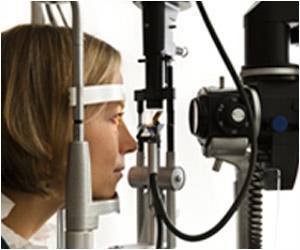People with greater amounts of yellow pigment in the eye may be better able to see distant objects in hazy conditions.

Increased macular pigment (MP) may help in filtering out "blue haze," thus making distant objects more visible, according to the experimental study by Laura M. Fletcher, MS, and colleagues of University of Georgia, Athens. "The results suggest that people with high levels of yellow macular pigment may have some slight advantage in hazy and glare conditions," comments Anthony Adams, OD, PhD, Editor-in-Chief of Optometry and Vision Science.
Macular Pigment Affects Vision through 'Blue Haze' The researchers tested the effects of MP on the ability to see distant objects through "atmospheric scattering," or haze. "All human eyes, and many animal eyes, contain an inert yellow pigment that is reported to be both protective and also slightly enhance vision, particularly in short wavelength (blue light) settings," Dr Adams explains. Some people have more MP than others.
The researchers designed an experiment to simulate hazy conditions to see if individuals with higher levels of MP can better see distant targets. Laboratory studies were performed using xenon light, paired with a specialized glass filter, to closely approximate the effects of atmospheric haze. The subjects varied widely in the density of MP present in the eye.
At increasing levels of simulated blue haze background, the visibility of distant objects decreased significantly. However, individuals with higher levels of MP required more stimulated haze before they could no longer see the distant target.
For subjects with the highest versus lowest levels of MP, there was about a twofold difference in the amount of haze required to lose sight of the distant object. The researchers write, "An individual with high MP optical density would be able to detect a target at a much greater distance (ie, more atmospheric haze between them and the target) than an individual with lower MP optical density."
Advertisement
But from an evolutionary standpoint, it's much more likely that accumulations of MP could develop as a result of favorable effects on vision. The new findings support the "visibility hypothesis" of MP accumulation: by absorbing atmospheric haze, which is predominantly short-wavelength light, the presence of MP may extend visual range outdoors.
Advertisement
Click here to read "Visibility through Atmospheric Haze and Its Relation to Macular Pigment."
Source-Eurekalert















